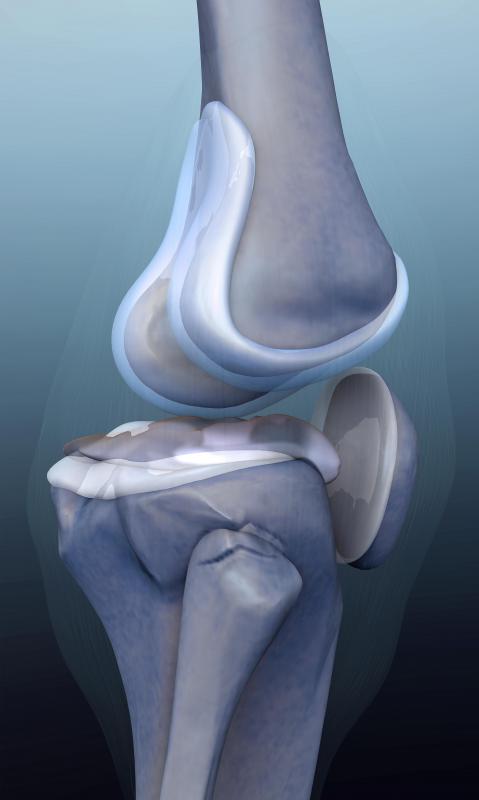At TheHealthBoard, we're committed to delivering accurate, trustworthy information. Our expert-authored content is rigorously fact-checked and sourced from credible authorities. Discover how we uphold the highest standards in providing you with reliable knowledge.
What is the Perichondrium?
The perichondrium is a layer of connective tissue found in cartilage and around the bones of humans and many animals. Its main job is protection: it protects bones as they grow, and also supports cartilage development. There are also a couple of sustaining roles played by this tissue, particularly as concerns blood flow. This tissue is dense but porous and flexible, and as such it can help facilitate blood flow and the transfer of oxygen from place to place. Babies and young children tend to have the highest density of this connective tissue around their bones, but there’s a lot surrounding the cartilage in people of all ages. The nose and ears tend to be some of the best sources, and the tissue helps these parts remain strong by helping nutrient delivery and also protects them from injury and trauma. When injury or trauma occurs, it plays a key role in cellular regeneration.
Main Function

Like most connective tissues, the main purpose of perichondrium is to provide elasticity and protection to some of the more sensitive or fragile parts of the body. It essentially acts as a thin coating. It’s made up of a number of proteins linked together, and it houses a high concentration of blood vessels. These vessels transport nutrients to and from the cartilage, which helps the cartilage stay healthy and strong. It’s one of many different tissue layers in the body and it doesn’t work alone, but its role is nevertheless quite important.
Where It’s Found

This particular sort of tissue covering is found throughout the body but is usually most highly concentrated in cartilage structures like the ears and nose. Other areas of the body where this tissue is prolific include the trachea in the throat, as well as the place where the ribs connect to the sternum. Tissue layers can also help protect key areas in the back, as well, and this sort of cell layer is usually found in between the vertebrae of the spine.

It coats the surface of many of the smaller connective bones where it works with other cell layers to improve things like joint resistance and reduces friction during movement. It is not usually found on the longest bones in the body, however, since bone coating isn’t typically its main job.
Relationship to Periosteum
When it occurs on the bones, the perichondrium often overlaps with another connective tissue known as the periostreum. These tissue layers have a similar job when it comes to protection, but the biggest difference concerns nutrition. The blood vessels contained in the perichondrium are most useful for cartilage, and they aren’t usually able to deliver nutrients that are useful for bones. The periosteum, on the other hand, is able to do this. It produces osteoblasts, which nourish bones and help them grow.
Consequences of Injury

One of the easiest ways to see this tissue in action is to observe how cartilage heals after a traumatic injury. When a person is healthy and all of his systems are operating as they should, connective tissues usually go undetected. Cartilage is usually a soft tissue that can be prone to injury, though, particularly on places like the nose and ears that protrude from the face. Connective tissues play an import role in cell regeneration and growth to enable fast recovery.

An injury commonly known as “cauliflower ear” is a good example. Cauliflower ear happens when a person, commonly a boxer, wrestler, or other grappling athlete, sustains a hard blow to the ear. A hard punch can cause a blood clot and additional fluids to form underneath the cartilage and can actually separate the cartilage tissues.
The body typically forms a tough shell of tissue around the skin of the ear that begins at the connective layer. As a result, the ear puffs up, swells, and begins to resemble a cauliflower. To treat cauliflower ear, a doctor typically will drain the fluids and then ask the patient to wear a compressing tie around the ear. The tie then helps the cartilage to reconnect until healed, and allows the connective tissues time and space to regenerate cartilage material.
AS FEATURED ON:
AS FEATURED ON:

















Discussion Comments
It's important to note that only the outer (fibrous) perichondrium contains blood vessels, the inner layer as well as the cartilage itself does not and must reply on diffusion to receive nutrients. This is why cartilage is very slow healing.
Post your comments